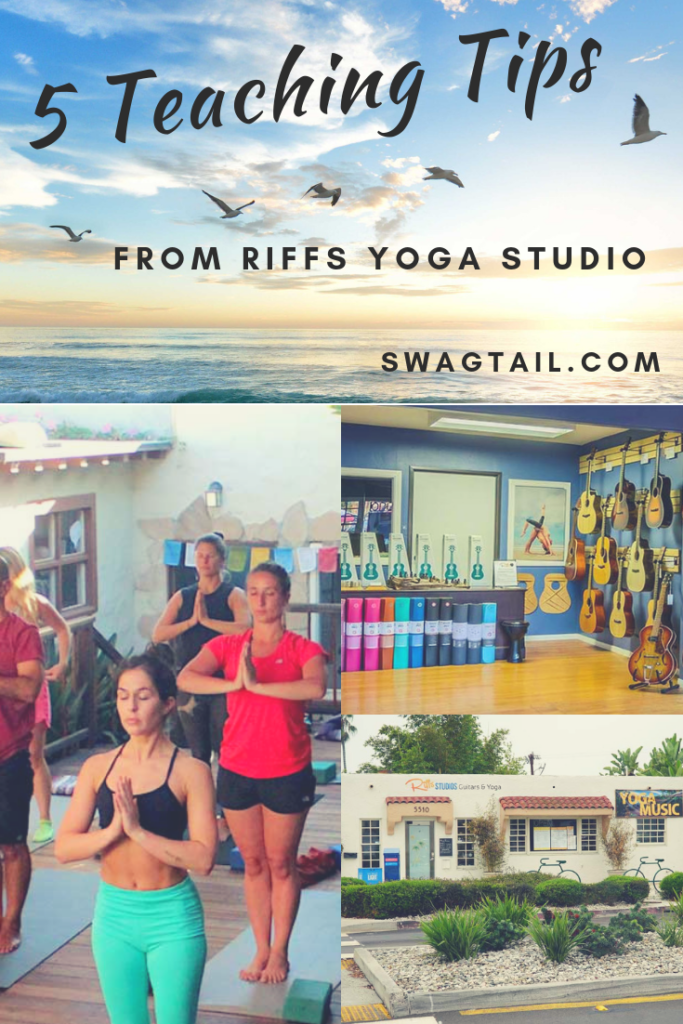 Traveling is such a great way to expand your perspective and see the world through new eyes. This is especially true when visiting yoga studios outside of your local community. Not only do you get to enjoy simply being a student on your mat, but you glean new information from other teachers.
Traveling is such a great way to expand your perspective and see the world through new eyes. This is especially true when visiting yoga studios outside of your local community. Not only do you get to enjoy simply being a student on your mat, but you glean new information from other teachers.
On a recent two-week road trip, my husband and I drove 1800 miles throughout the California Coast. This adventure led us through Santa Cruz, Pacific Grove, Santa Barbara, Redondo Beach, and San Diego. Along the way, I visited many yoga studios, including Riffs Yoga Studio in La Jolla.
I met Steve Hart (the owner) and Karina Gerschler (head of YTT) at a recent yoga teacher training with Mark Stephens in Santa Cruz. I instantly felt drawn to check out their unique, outdoor studio located just blocks from the Pacific Ocean. What also makes this venue special is that it also doubles as a hub for musicians. Craft guitars and crystal singing bowls welcome you into the space, and the music lessons taking place on site create a soothing background ambiance while yoga classes take place outside on the custom deck.
Since I was in the area for three days, I had the privilege of taking a few classes at Riffs. I highly recommend you visit this amazing studio when you’re in the San Diego region. But if you don’t have plans to be there anytime soon, I want to bring some of their magic to you. Here are 5 teaching tips–from instrumental innovation to pose-modifications–that I took away from my visit there.
Photo Credit: Frank McKenna
(1) ASK QUESTIONS TO BUILD COMMUNITY
Once Steve was ready to begin class, he invited the group to come to a seated position. He then made eye contact with each participant and asked them to share their name and how their body was feeling at the moment.
This was powerful for a few reasons:
- It allowed each person to identify a starting point for their practice.
- It provided insight for the instructor about the energy levels and physical condition of the participants, and
- It opened the door for people in the room to learn about each other without having any prior connection beforehand.
During this brief exercise, I learned that people were sore from training, hiking, and other cool endeavors off of their mat. A newcomer to the area shared about her recent move from Chicago. Others admitted it was their first time to the studio altogether.
Because each person shared something about themselves, it created opportunities for organic conversations to form after class. Keep in mind that the class size was about 15 people, and the entire process only took 3-5 minutes. In any case, incorporating questions at the beginning of class can help form, and strengthen, bonds between students at your yoga center.
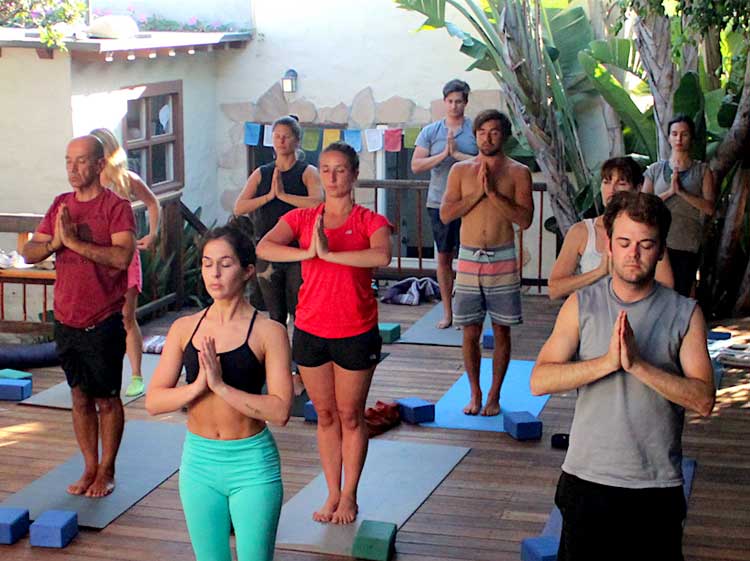
Photo Credit: Riffs Yoga Studio
(2) PLAY A SINGING BOWL DURING PRANAYAMA
One fantastic way to begin a yoga class is with conscious breathing techniques. This creates an immediate point of focus for each individual, and helps them tune into their body. Pranayama is also a fantastic way to move energy throughout your entire being. You might want to enliven the group with kapalabhati, or you could calm the vibe with sitali or sitkari on a hot day.
Adding sound vibration to this part of the start of class can enhance your intention behind using pranayama. At Riffs yoga studio, the instructor played a singing bowl throughout the seated breathing session.
To try this in your class:
- Have the students find a comfortable seat. Invite them to observe their natural breathing patterns. Tap the edge of your singing bowl a few times during this portion of breathing and allow the sound to resonate in the room.
- Instruct students to them find shama pranayama. This means they will have the length of their inhales match the length of their exhales. Again, tap the edge of the singing bowl. Before the sound dies completely, play the bowl again. Repeat for 1-2 minutes.
- Encourage students to play the edge of their breath. Just like you want yogis to find the balance between improving a posture and maintaining a sense of ease within it, ask your class to extend the length of each part of the breath. This could mean adding length to each inhale and exhale. It could also mean they discover how long they can sustain a sense of calm in between each breath. Continue to fill the room with sounds of the singing bowl during this breathing practice.
- Transfer sound from the singing bowl to the breath itself. For the last portion of the pranayama, incorporate ujjayi breathing without playing any instrument in the background. The lasting vibrations of the singing bowl may linger in the room, or in the bodies of your students. And now, as they turn up the volume of the breath, they’ll be able to continue using their auditory senses as the body moves through various postures in the rest of practice.
As a side note here, Steve had a compact carrying case that protected his singing bowl on the way to and from class. I highly suggest investing in one of these if you teach at various locations.
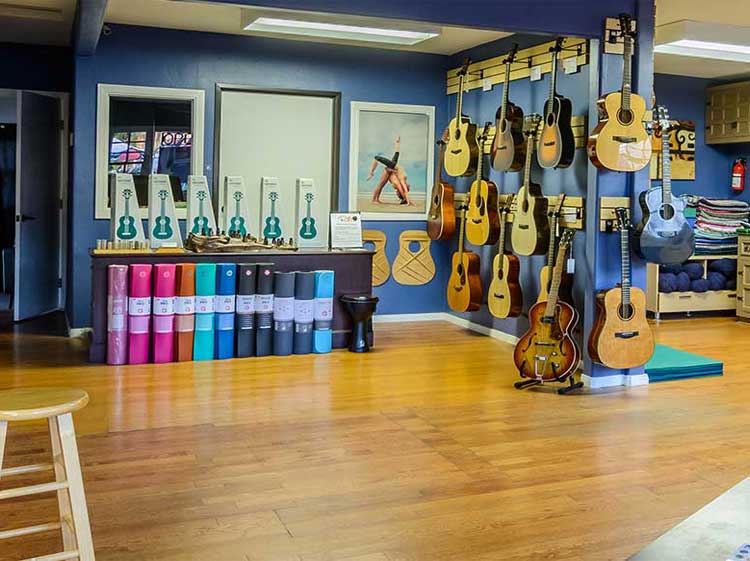
Photo Credit: Riffs Yoga Studio
(3) ADD A HANDS-ON-ASSIST IN FIGURE 4 POSE
A dynamic yoga class can build heat in the legs, core and hips. After you engage these areas with various standing poses, you can lengthen the tissues in more passive postures toward the end of your sequence.
One accessible way to stretch the lateral and external rotators of the hip–such as the piriformis and glute minimus–is through reclined figure 4 shape. While you might have students use a wall to make this pose easier, you can also provide a simple adjustment to do so as well.
To make this hands-on-adjustment:
- First, ask if it’s okay to do so with your student.
- If the student gives permission, then stand facing them and lightly bend your knees.
Take their bottom leg and place the foot on your quadriceps (thigh just above the knee). You are now becoming the wall. - Remind them to keep their top knee bent, and rotating away from the body. Have them also keep the foot flexed (to protect the knee).
- Start to move your body closer to theirs, so that their bottom leg moves closer to their torso. This will intensify the stretch.
- Have them verbally tell you when the pressure increases the quality of the stretch (like moving from a 5/10 to a 7/10 on a stretch scale). Prompt them to have you stop before the sensations become too strong (like a 10/10 of their stretch capacity).
- Stop when instructed and encourage them to breathe deeply into the stretch.
- When you’re ready to release the assist, back away slowly so that they can still maintain the shape of the pose.
- Consider adjusting the other side in the same fashion for that student to help them feel even more balanced after this passive hip work.
(4) STRETCH THE HIPS & SHOULDERS TOGETHER
Since there are numerous muscles that move the femur within the pelvic girdle, it’s important to address them all in yoga. A fantastic posture to lengthen the psoas major–which runs from the lumbar spine down to the front of the femur–is Bhekasana.
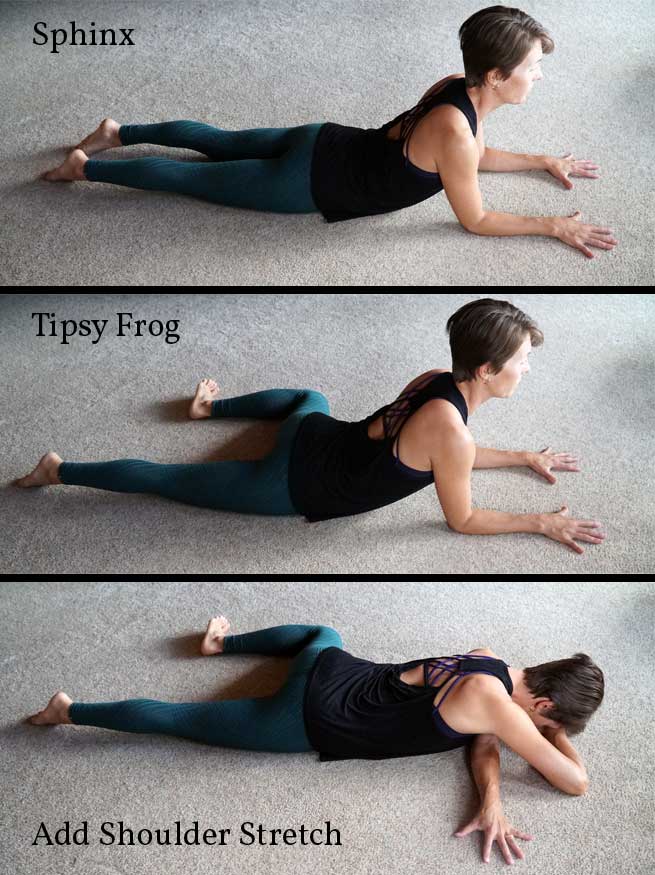 This is an incredibly challenging posture, as many individuals have tight and weak hip flexor muscles. Even Ardha Bbhekasana can be difficult.
This is an incredibly challenging posture, as many individuals have tight and weak hip flexor muscles. Even Ardha Bbhekasana can be difficult.
Instead, you might want to opt for another variation, one Kathryn Budig coined as Tipsy Frog.
To make this pose easier:
Place a thin blanket under the bent knee. This will cushion the knee joint.
To make this pose more challenging:
Combine a shoulder stretch with this hip opener. For example, if you have your right knee bent, and your left leg straight behind you, walk your right arm underneath your left (keeping the palm facing down). This will stretch the back of the shoulder, or the external rotators. You can then bend your left elbow and place your forehead on the back of your left hand.
When the left leg is out to the side, the left arm will then go across the body and the back of the right hand will support the head.
Consider holding the pose 1-2 full minutes on each side once your class settles into the posture. Since it can be a bit intense, remind them to keep breathing deeply. Or, as one of my yoga teachers often says, “breathe a lot!”
(5) USE A WAVE DRUM DURING SAVASANA
Since Riffs yoga studio is also a music store, it’s entirely fitting that they incorporated another instrument during the final relaxation of class. This time, instead of a singing bowl, it was a wave drum. Also known as an ocean drum, this round instrument contains metal beads between the clear and fiberskin heads. You can beat it like a shaman drum or shake it like a shakere. To soothe your students during savasana, though, it’s best to replicate the sounds of ocean waves crashing upon the shore.
To play your ocean drum during savasana:
- Notify your students that sound will accompany their final relaxation.
- Since each person has an individual reaction to sound, advise them to tune into any sensations and thoughts that arise during the process. Ask them to breathe more deeply if any tension arises, and invite them to relax their muscles onto their mat.
- Then, start with the drum horizontal, like a serving tray.
- Roll your wrists slowly, allowing the beads to roll around within the drum. You can play with how quickly and how slowly you roll the beads to change the intensity of sound.
- Walk around the room as you play.
- Perhaps even stop at each mat, holding the drum about 2 feet above the head and chest of your students. Roll the drum here, allowing the sounds and vibrations to get stronger for each participant.
- End your savasana period once each student has been given attention accordingly (should you take that route).
Check out this simple video for ideas on how to play an ocean drum, and consider the varying price range for such a powerful teaching tool. There are 22 inch drums on Amazon around the $77 price range. To get the best quality sound, I recommend reaching out to Riffs directly. Steve can help you find a drum to fit your needs and can ship to you directly. Add this technique to your teaching repertoire to win over many hearts and minds in your classes! Give it a try!
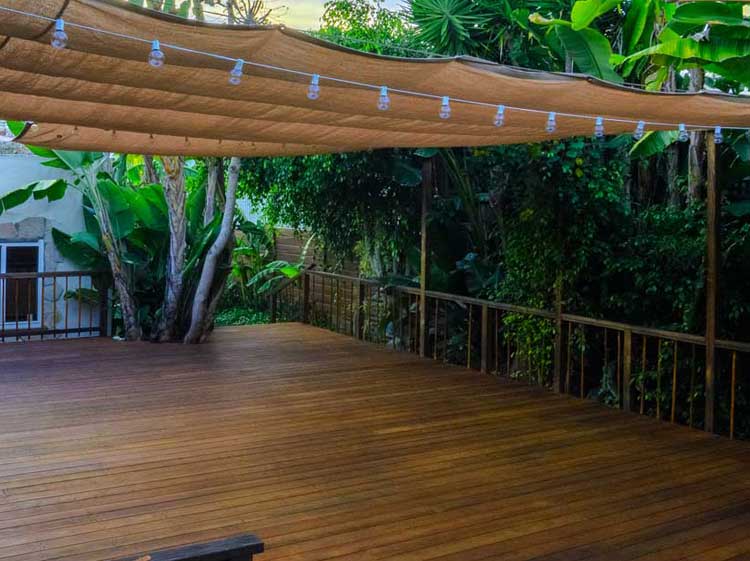
Photo Credit: Riffs Yoga Studio
WHILE IN LA JOLLA…
While you’re in the area, you might want to grab some delicious food before or after your yoga class at Riffs yoga studio. Consider the following options:
- A breakfast sandwich from Wayfarer Bread and Pastry. This is located right across the street from Riffs and combine fresh flavors that are sure to delight your taste buds.
- The turmeric latte from Parakeet Cafe. The bright colors and vibrant plates at this adorable spot will tantalize all of your senses, and just like Wayfarer, anything you select on their menu will take your love of food to a new level.
- Ichiban Sushi in Pacific Beach serves us great sushi for vegans and fish lovers alike. Don’t let the budget prices or lackluster decor fool you–meals are fresh and tasty! You’ll not be disappointed!
- The Lodge at Torrey Pines serves up one of the best views in town! Cozy up next to the outdoor fire pits on a foggy morning or savor the shade under an umbrella on a sunny afternoon as you gaze over the majestic Pacific Ocean. And, the food is exceptional (unlike many golf-related establishments across the country).

PUTTING IT TOGETHER
See the world through new eyes each time you travel away from your local community. When you visit new yoga studios along your journey, such as Riffs yoga studio in La Jolla California, you’ll discover inspiring ideas to incorporate into your own classes at home. This might include new ways to include musical instruments at your studio or even new postures to weave into your existing class sequences.
Want to stay up to date with our latest travel adventures and teaching tips? Join our community of yoga professionals who are committed to excellence. We send out a weekly email to keep you in the loop!


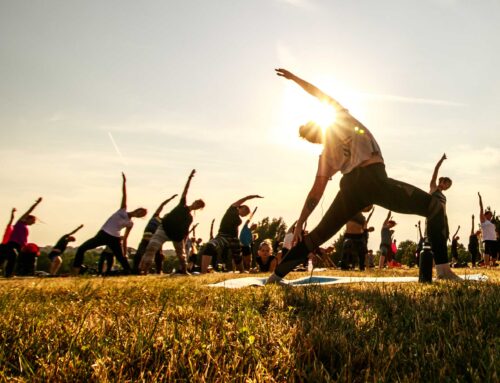

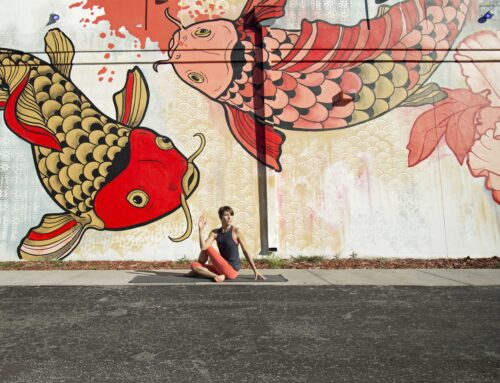
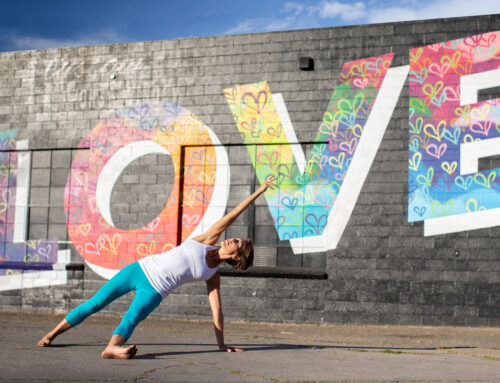
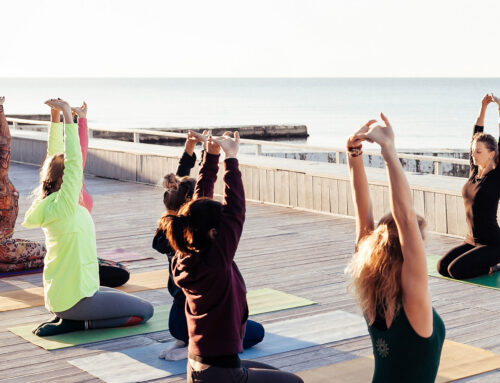


Leave A Comment